🌊 Artificial ghosts, imaginary decolonization, and post-apocalyptic SMEs — highlights from Seapunk Midsummer Studio 🪩
What does a research-and-imagination collective even do anyway?
Hello folks! It’s Sam and I’ve just landed back home last night after an exhilarating nine days of Seapunk Midsummer Studio in Chiang Mai.
It’s now been exactly nine months since our inaugural Seapunk Playshop. We’ve come to conceive of Seapunk Studios as a research-and-imagination collective, seeking to blend rigorous research with wild imaginations in our search for fresh solarpunk- and open-sea-inspired southeastasian futures.
But what does that look like in practice?
What comprises research and imagination?
Well, here’s what we’ve just done.
Here are ten highlights from the past nine days of seapunkin’:
Designing ‘artificial ghosts’ at the Good Ghosting sci-fi
workplayshopStudying SEA’s tradewind-shaped human history through a reading seminar
Theorizing how the seas, as a medium, shape or mediate the dynamics of a realm
Soul-searching for fresh non-futile frontiers of climate action and agency…
…Worldbuilding (after an abyss) a post-apocalyptic SEA swarming with SMEs
Blueprinting novel pedagogies and curricula via a learning intervention design jam
Engaging with new ideas at the Decolonizing Southeast Asian Studies conference
Presenting an academic paper (Seapunk’s first) titled Imaginary Decolonization
Grappling with ‘seeing power’ at the closed-door sub_versity salon
Co-imagining ‘transition fiction’ about societal, systemic, and structural change
Let’s dive in 🤿
1. ‘Artificial ghosts’ science fiction
We began with a sci-fi workplayshop over the weekend, premised upon the concept of ‘artificial ghosts’ (that grew out of earlier work on distributed AI, culminating in South Beast Asia).
Artificial ghosts are a form of distributed, embodied, autonomous AI that can deployed into particular bodies or places. Imagine installing an AI ‘into’ a tree, in such a way that the AI can begin to sense and learn from data like a tree (moisture, sunlight, soil bacteria, etc.) such that over time, the AI begins to be able to ‘think like a tree’, or at least ‘think like a ghost inside a tree’.
Another way to think of artificial ghosts is as a hybrid of traditional ‘analog’ ghosts and agentic AI, as illustrated in the Venn diagram above. Now we can ‘haunt’ anything!
In an interesting inversion, artificial ghosts have the advantage of being more ‘natural’ than analog ghosts. Artificial ghosts are made of code that can be naturally verifiable (code can be debugged and analyzed), whereas analog ghosts are only supernaturally accessible, at least for now. This allows us to create and program stuff like accountable ghosts and legally-interfaceable ghosts. A supernatural ghost in a tree can’t currently be held accountable, or serve as a witness in a court of law (e.g., if there are allegations about soil poisoning). But an artificial ghost can.
What might we even begin to imagine with these possibilities?
This is what the Good Ghosting playshop was about. Sixteen ghostwriters imagined all sorts of ‘good ghosts’ — from convenience store gods to ‘scam-munity’ daemons — and wrote science fiction about them, with many subsequently submitting pieces to the Ghosts in Machines contest.
2. Reading seminar
Our Studio week began on Monday morning with a mini seminar, in which we read and discussed the tradewind-shaped human history of Southeast Asia through an excerpt from Leonard Andaya’s Leaves from the Same Tree — one of the few dozen books, readings, and games in our Studio library over the week! 🤓
Here’s a snippet:
Southeast Asia sprawls across the Indian and Pacific Oceans, and until perhaps the sixteenth century the only known sea passage through the region was the Straits of Melaka. Located midway between the major civilizations to the east and the west, the straits proved an ideal haven for ships because it was protected from the strong monsoon winds by parallel mountain chains along the spines of Sumatra and the Malay Peninsula. It was the “endpoint” of both the northeast monsoons that blew between January and April and brought traders from the east, and the southwest monsoons of July to November, which carried traders from the west. While traders awaited favorable winds to return home, the communities located astride the straits quickly seized the opportunities the situation provided. They established ports for traders to repair their ships, replenish supplies, obtain local products, and exchange goods with merchants from all parts of the world. Furthermore, the interior of both landforms that bordered the straits produced valuable forest products, particularly camphor, benzoin, gaharuwood (eaglewood), and dragon’s blood (a kind of kino)—all of which were highly prized in the international marketplace, particularly in China.
For more than two thousand years, this narrow waterway brought traders, religious scholars, diplomatic missions, and adventurers to the ports bordering its shores. As a result of the economic opportunities provided by the steady influx of people and goods, communities in the vicinity of this waterway became increasingly involved in international trade. Much has been written about the impact of international and domestic trade in the transformation of Southeast Asian societies, both materially and spiritually. In every period it was trade that served as the stimulus for the movement of goods and ideas across continents, and Southeast Asia’s ideal location midway between major civilizations provided its leaders with the luxury of surveying, experimenting, and selecting those elements that were most appropriate to advance their societies.
3. Theorization: how seas mediate
Building upon our seminar readings and as part of an ongoing research study exploring Southeast Asia-salient patterns of systems, coordination, and protocols, we also discussed how the ‘medium’ of the seas shaped (‘mediated’) the connections, exchanges, and interactions of people, trade, and cultures throughout history.
Taking some initial steps towards a theory, we then outlined some broader theoretical hypotheses around what these patterns might suggest for the more general, fundamental nature and structure of ‘mediation’.
Note: We’ll share more as this study unfolds, but feel free to reach out if this piques your interest!
4. Searching for (non-futile) climate agency
The next day began with an exploration of the question of societal climate action in the context(s) of Southeast Asia.
Southeast Asia sits on critical frontiers of our climate predicament, but the prevailing wisdom around regional climate action often feels futile, dwarfed by the scale and severity of the problem and with the region a few too many degrees removed from key global decision centers to carry weight. Is there a robust case for climate agency, hope or cope, from a SEA view? Where, if so, might be our key loci of climate agency?
We wrestled through these questions, confronting and contemplating billionaire bunkers, institutional paralysis, edge ecoterrorisms, climate refugees, population collapses, and more. It was… a bit of an abyss 🫥
5. Worldbuilding: post-apocalyptic SMEs
It wasn’t pretty, but it turned out to be exactly what we needed.
However, a short fiction sprint (ending the piece with the prompt above) and a good night’s sleep later, we came to a realization: life and people in SEA have almost always found a way to adapt and carry on, through centuries of displacement, conquest, occupation, blockades, reeducation, wars, coups, disasters, and crises.
Could small nimble distributed adaptation, regardless of (or perhaps even despite) large institutional structures, be the nexus of climate agency we were looking for?
Following this thread further led us to imaginations of a post-apocalyptic world characterized not by the mourning of collapsed institutions but by the energetic pursuit of new post-apocalyptic opportunity. Once we learned to see past the center, we found —and eagerly built — a world bursting with energy, opportunity, and agency.
In this imagined world, everyday entrepreneurs and their small-medium enterprises (commercial, cultural, civic, etc.) or SMEs have become the post-apocalyptic pioneer species of human ecology.
Here, one’s collapse is another’s compost.
We found this world incredibly energizing (perhaps as we emerged out of the abyss of our prior search for non-futile climate agency) and are continuing to build it out further, with an eye towards sharing — and perhaps even staging — it later this year.
If you might be interested in helping us with further worldbuilding or helping us host or bring this to a relevant community, collaborator, or audience, please get in touch!
6. Education (re-)design jam
While neither Seapunk nor the Midsummer Studio are explicitly about formal education, dozens of ideas relating to alternative models of learning surfaced organically for our group over the course of the week.
So we decided to channel them all into a learning-intervention design jam in which we sketched out novel approaches to pedagogy and curriculum including:
Indigenous dialectical traditions
Sovereignty stack simulations
Practical exercises in both elite-led and elite-less governance
We expect to develop and pilot these further — stay tuned or get in touch.
7. Conference on Decolonizing Southeast Asian Studies
Later in the week, about ten of us also attended a conference at CMU (incidentally making Seapunk probably the largest contingent, apart from the hosts!) on the topic of Decolonizing Southeast Asian Studies.
We particularly enjoyed one of the keynotes, and also got to engage with many speakers and presenters, both within the conference and at a special Seapunk-hosted happy hour.
8. Presenting Seapunk’s first academic paper: Imaginary Decolonization
We also had the opportunity at this same conference to present Seapunk’s first academic paper on Imaginary Decolonization (slide and graphic sketch above, abstract below).
The paper identifies the imaginary as a critical fundamental locus of any serious decolonization endeavor, and offers some of the inaugural Seapunk Symposium research from 2024 as foundational vectors towards a decolonized SEA imaginary.
Imaginary Decolonization: Seapunk & The Search For Authentic Southeast Asian Solarpunk Futures
What are the loci of decolonization, and where are we decolonizing from (and towards)?
Decolonization spans many loci: political, institutional, academic, economic, cultural, societal, territorial, and more. This paper suggests the realm of the “imaginary” as a fundamental yet underappreciated loci of decolonization, and proposes that “imaginary” questions of how people envision themselves, their agency, and their futures should be considered critical foremost frontiers for any serious decolonization endeavor.
Drawing inspiration from the recent Seapunk research-and-imagination movement — characterized by “a search for fresh and authentic Southeast Asian solarpunk futures” – this paper offers the four key root reimaginations from Seapunk’s inaugural symposium as four foundational vectors of imaginary decolonization: (1) living with, instead of over, the world, (2) small sovereignty enabled by big commons, (3) synthesizing science and spirituality towards an ethic of stewardship, and (4) reimagining the relationships between the urban, rural, cosmo-, and local towards fresh forms of “future indigenous” living.
Each of these four vectors is then explored in this paper, accompanied by analysis of historical context, present predicaments, and future horizons across various regional events and encounters. Contemporary colonial legacies are considered alongside fictional futures (from across many Southeast Asian visionaries, experiments, theories, and movements) to illustrate what bold and innovative Southeast Asian imaginary decolonization might look like across the region.
We expect this paper to be published later this year, and lots more research to come— subscribe for updates!
9. sub_versity — a salon about ‘seeing power’
To wrap up the week, we hosted a closed-door salon for twenty participants on the theme of ‘subversity’ in which we (playfully) explored notions like:
Seeing power
The agency in naming and framing
Geopolitics as football (and the geopolitics of football)
The power of the scriptwriter…
…and many more. The topics were heavy, but the tone was light…
10. Transition fiction
…and finally, we ended with an imaginative ‘transition fiction’ exercise premised on the idea that it is not enough to envision the end-state futures one might aspire to; one must also consider and imagine how things get there, creatively if necessary.
Across six small groups, we co-imagined stories of societal, systemic, and structural change, featuring memorable motifs like mycelial grandmother networks, friendly fundable police, great unpluggings, and — lastly, and perhaps fittingly to land the week — a culture that learns to listen, learn, and imagine through the space of silence.
Whew!
We hope this peek inside our recent Midsummer Studio gives you a sense of the range and kind of the research (reading, theorizing, deep-dives; climate agency, decolonization, seeing power) and imagination (artificial ghosts, post-apocalyptic SMEs, Imaginary Decolonization, transition fiction, elite-less governance) that Seapunk Studios — our lil’ research-and-imagination collective — is all about.
Sound like your kind of thing? Reach out to join / co-create a future session 💠


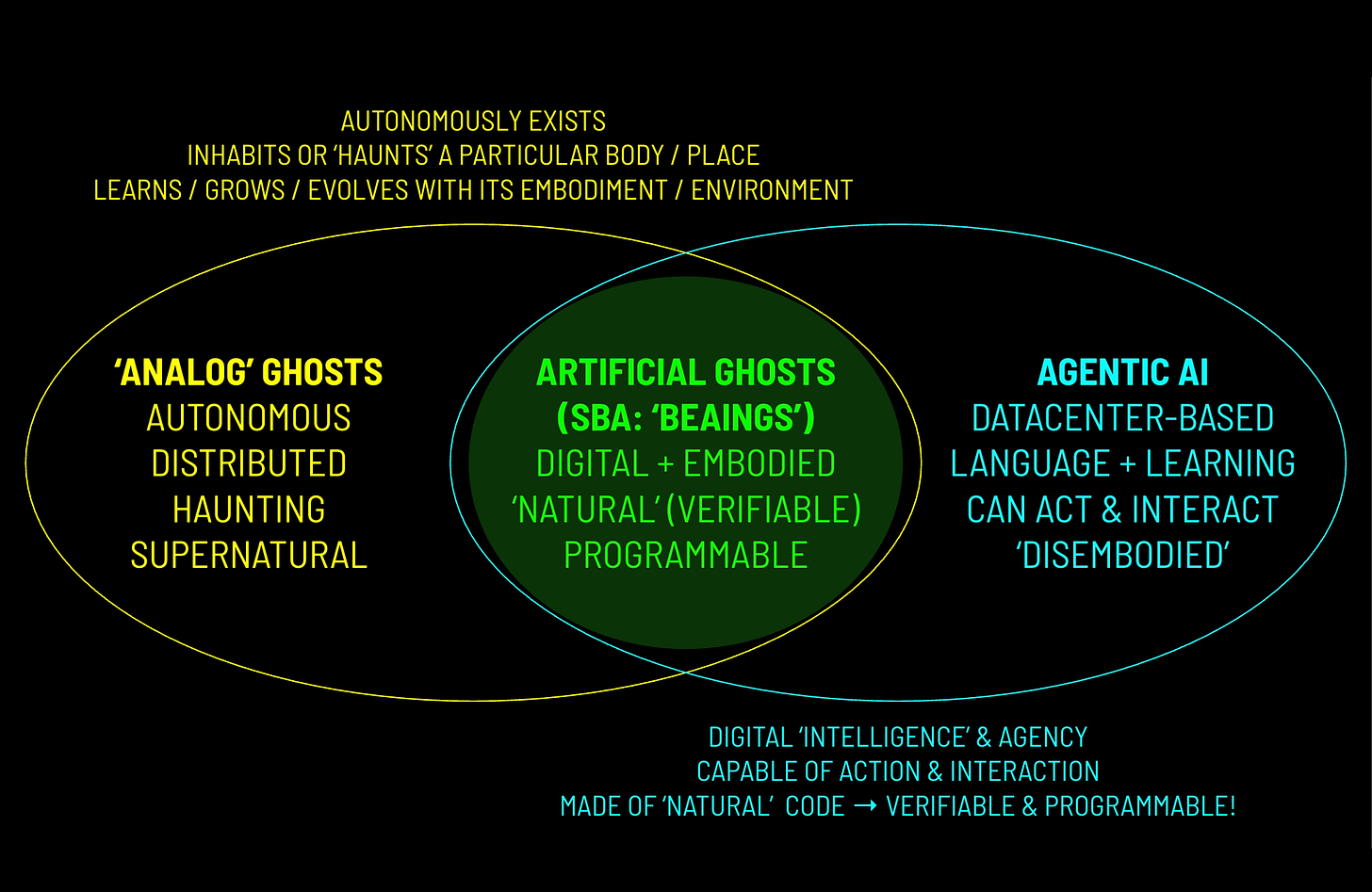
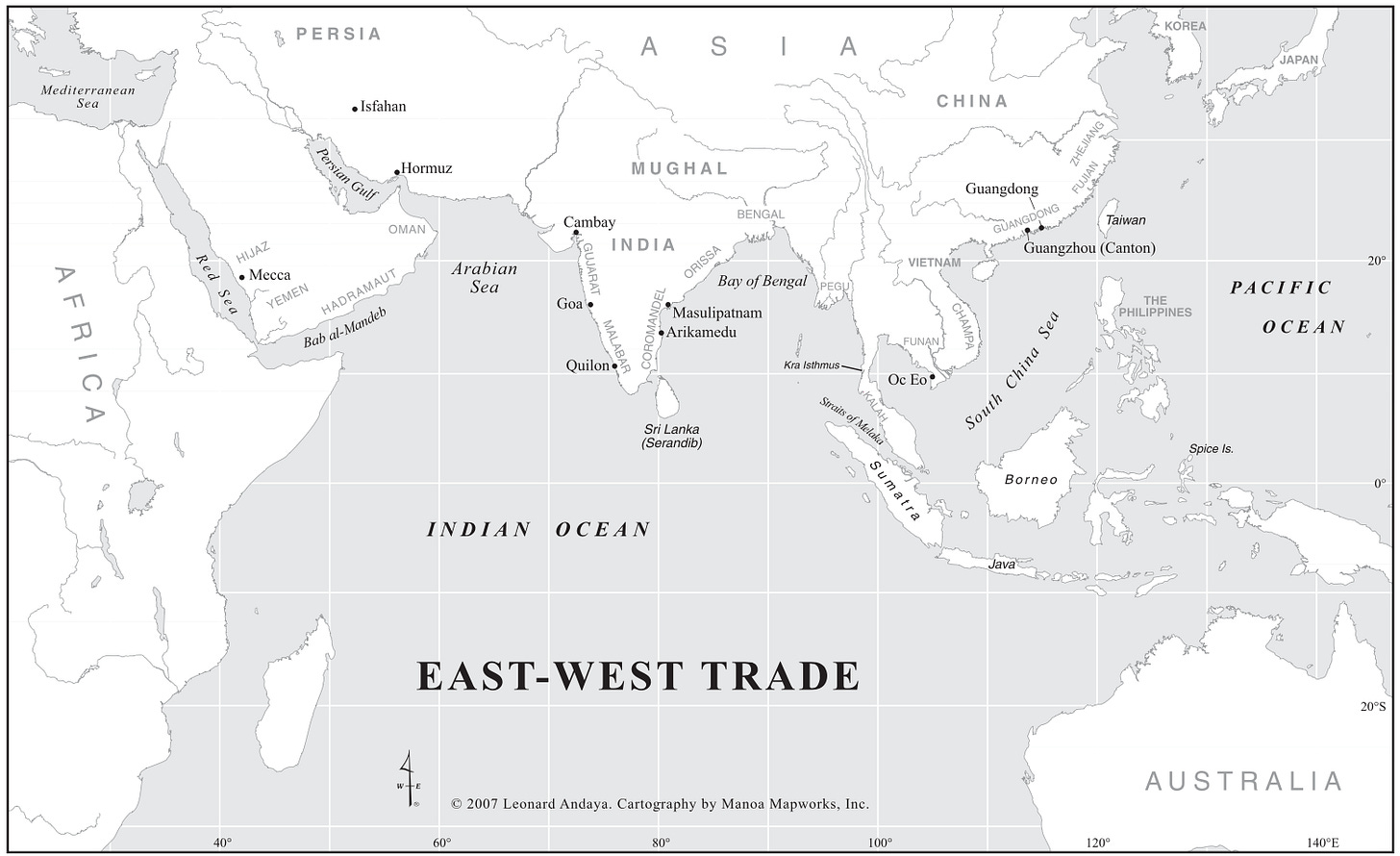
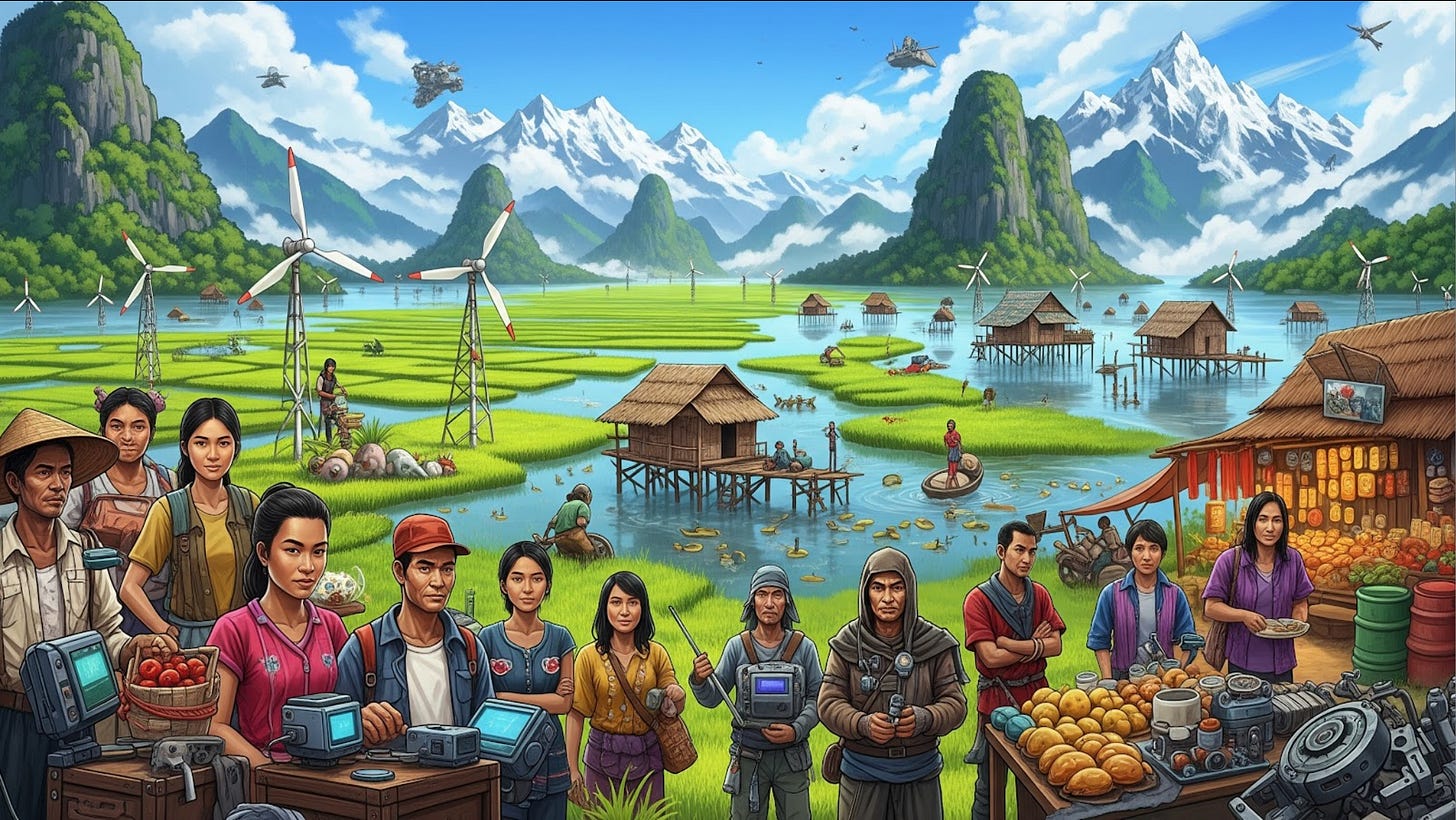
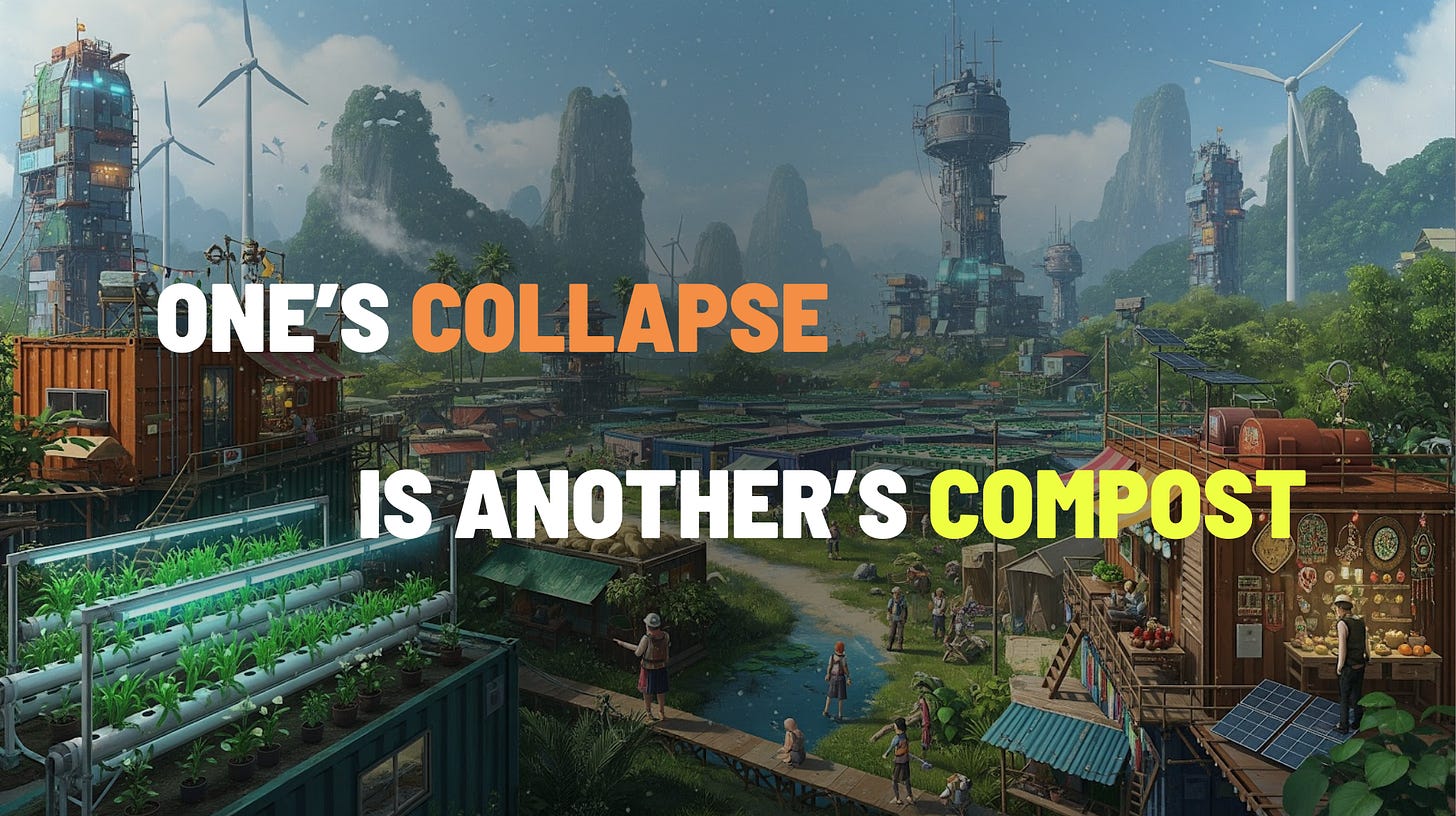
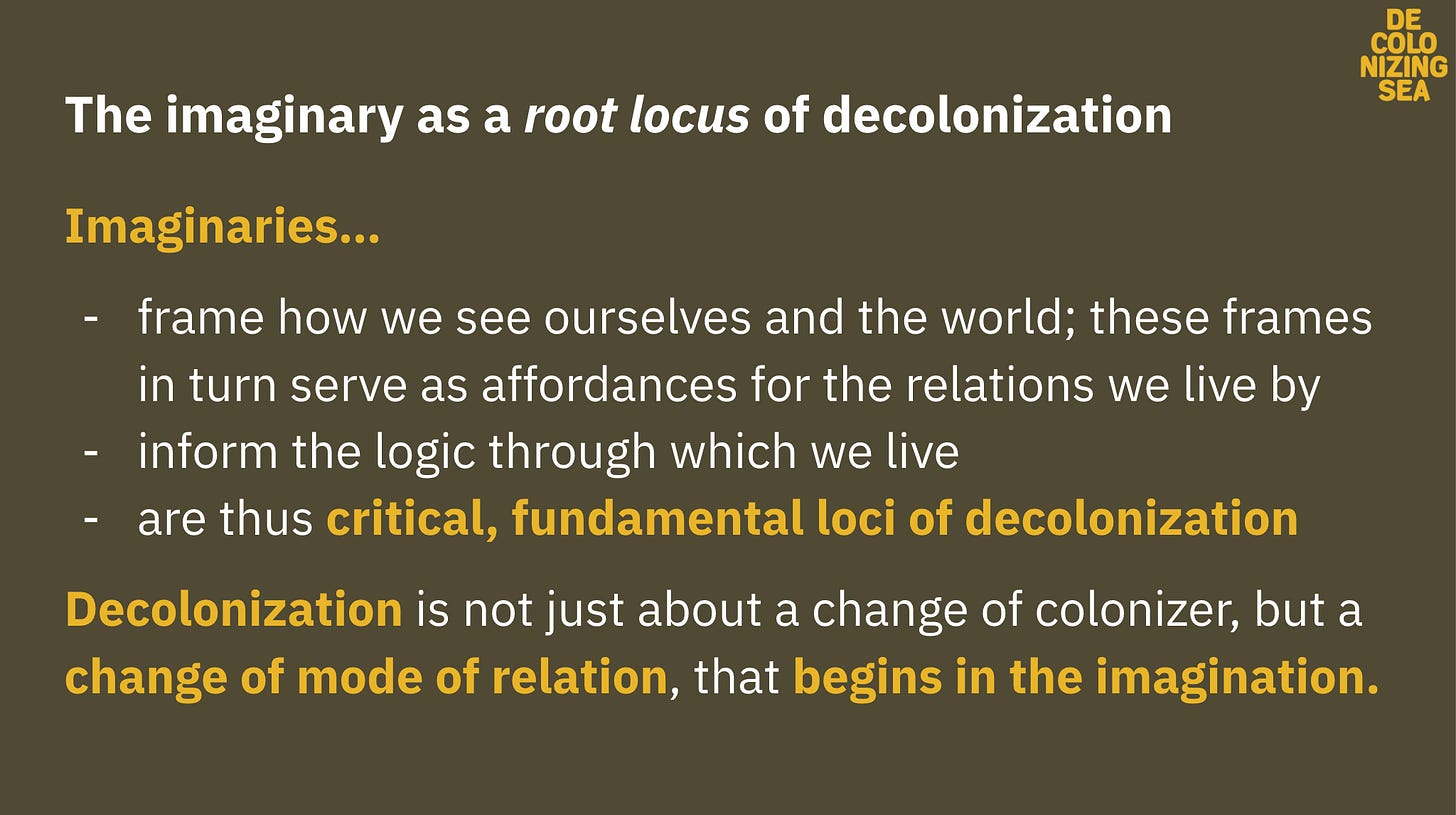
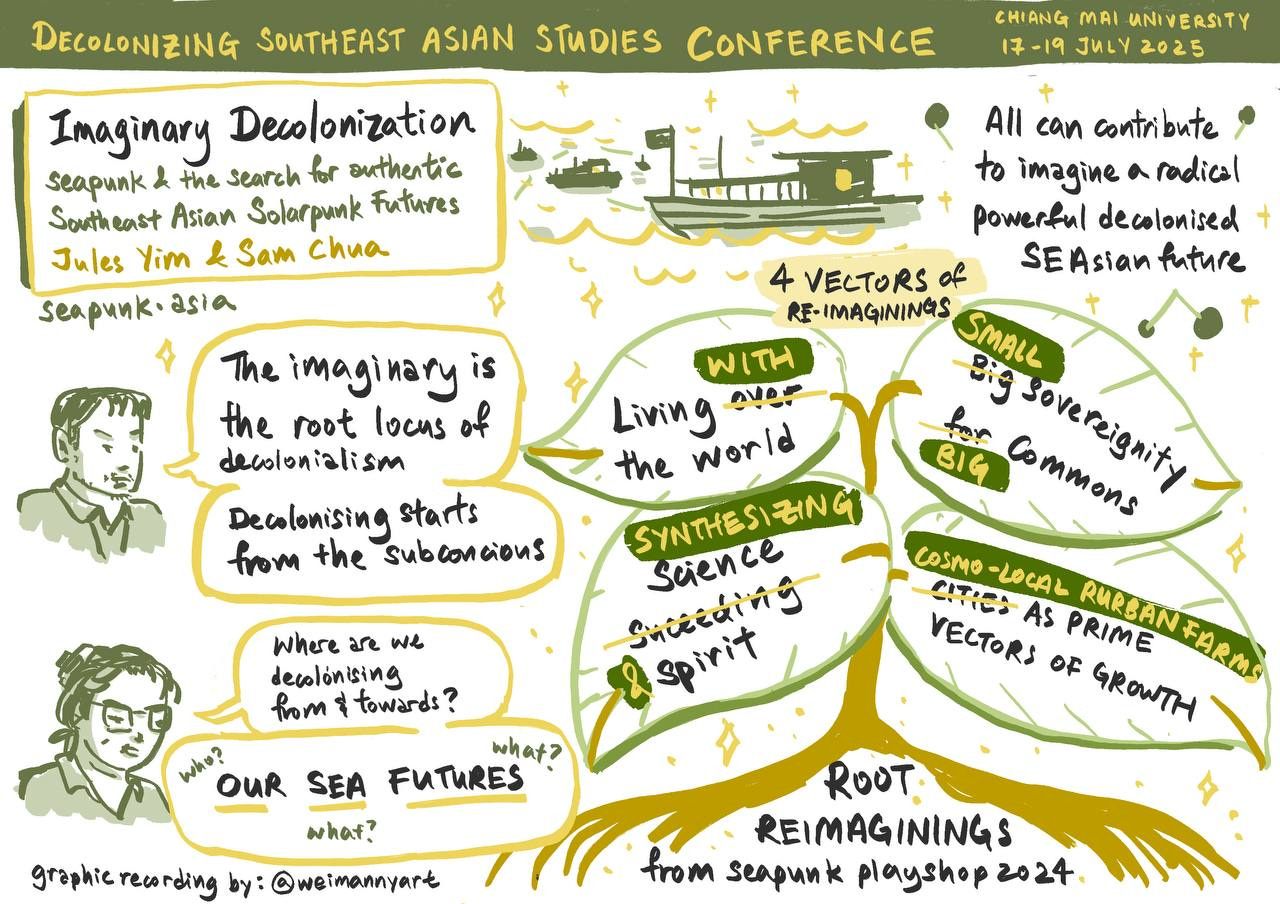

Updated July 23 to add a graphic recording from @weimmanny to the Imaginary Decolonization presentation section (this would not have been in the initial newsletter email)